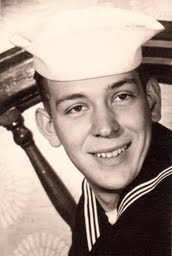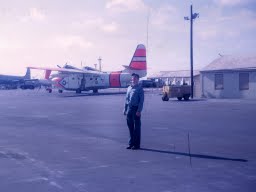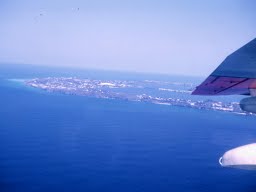SEND US YOUR PERSONAL MILITARY HISTORY AND WE WILL ADD IT TO OUR COLLECTION HERE.
SEND YOUR INDIVDUAL HISTORY TO: INFO@VOLUSIADEMVETS.ORG
John Jacobs
U. S. Coast Guard
1961-1964
Flying Search and Rescue in the Bermuda Triangle
Shortly after I arrived at the USCG Air Station in Bermuda in 1963, we were involved in an extended search for the ‘Sulfur Queen’. To us it was a ship that had sunk without a trace. For those who had spent long hours searching an endless ocean, this was a tragedy, but was not particularly hard to believe. Its disappearance became an unexplained event when it was written about as a Bermuda Triangle mystery a few years later.
I was a 21 year old third class Aviation Machinist Mate (an airplane mechanic) with only several months experience with the SU16E Grumman Albatross sea plane. We had three aircraft and a hanger near the end of the peninsula that was the US Navy base on the west end of Bermuda. There was a large ramp into the Great Sound which we used for takeoffs and landings. The SU16E had retractable landing gear, so it could taxi into the sound, retract the gear, and become a flying boat. It could also operate off of a normal runway.
The Vietnam War was beginning to build. There was quite a bit of military traffic transporting aircraft to Southeast Asia, many of which needed to be refueled over the ocean. The Air Force had large refueling aircraft in Bermuda for that purpose. One morning I was working on the tarmac and heard a noise. I looked up and saw a smoke trail going directly overhead and into the ocean a couple of miles away. It was an A.F. KB50 (a B50 that had been converted into a midair refueler). It had taken off from Kindly A.F. Station on the other end of the island, caught fire, and crashed into the ocean. The crew and co-pilot were able to bail out but the pilot was killed.
After I had been in Bermuda for several months, we moved the USCG Air Station from the Navy Base to Kindly AFS (commercial airport) on the east end of the island. Operating in salt water was hard on the airplanes and there were runways at the AFS. By this time I was qualified as a Search and Rescue Air Crewman and flew as Crew Chief. Because of our more generalized training, the crew chief was always an Aviation Machinist Mate, even though other more specialized crew members may be higher grades. Besides the pilot and copilot, we usually flew with a Crew Chief, a radioman, a parachute rigger who was responsible for the ordinance, and one or two observers. We actually had the skills required to fix most anything on the aircraft if we had a problem, and in many incidences we did just that.
On August 28th, 1963, two AF KC135 (Boeing 707s converted to midair refuelers) from Homestead AFS had just completed refueling three C-47s and were flying together two hundred and fifty miles southwest of Bermuda. They both disappeared without a trace. We were asked to join the search, along with several AF aircraft and CG aircraft from Miami. We had bubble windows in the rear of the HU16E, and the crew of five took turns with our heads in the bubble scanning the open ocean. After a few hours of searching, I spotted what appeared to be wreckage floating on the water about a thousand feet below. There was quite a bit of what appeared to be insulation from the aircraft fuselage and we were pretty sure that it was the crash site. Another aircraft found similar wreckage about two hundred miles away from our location. What happened and why they crashed so far apart is one of the mysteries of the Bermuda Triangle.
On June 29th, 1964, I had ready crew duty and was working on my airplane on the tarmac. There was a loud explosion. I looked up and saw the smoke trails of two aircraft crashing into the ocean. I immediately cranked the engines and got the aircraft ready to take off. We were soon flying over the wreckage of two AF transport aircraft, an HC-97 and a C-54. They had been practicing recovery operations for NASA on a Gemini spacecraft (Mercury Program). Several paramedics were parachuting from the rear cargo platform of the C-54 and the HC-97 was flying close behind photographing the exercise. They collided, there was a large explosion, and both crashed into the ocean. There were nineteen people killed in the accident. Five of the paramedics had parachuted before the collision and were in the water. One had just jumped and his hair had been singed by the explosion. We were searching for people and bodies in the water and directing boats to them. One of the paramedics told of warding off sharks while he was waiting to be rescued. The paramedics were enlisted men and lived on a separate floor in the same quarters that we lived in.
It was hurricane season, 1964. There was a storm moving between Bermuda and the U.S. East Coast. A large ocean going tug was missing. This was before the days of weather satellites and predicted location and movement of a storm was not precise. Our initial intention was to fly to Elizabeth City, NC and then to go out the next day behind the storm and search for the missing tug. The storm moved toward the NC coast and we changed our plans and two aircraft left Bermuda and flew to the air station in New York. We got there late in the afternoon. The storm changed track and the pilot decided that we would be better off in NC, so, late that evening, we flew to Elizabeth City CG Air Station. Early the next morning, we flew out to a search area about three hundred miles east of Cape Hatteras. The visibility was poor with scattered low level clouds. We searched for several hours. The only thing that we saw, other than rough ocean and clouds, was small row boat floating just under the surface. That afternoon we headed back for Elizabeth City. We soon ran into a bank of dark clouds and thunder storms, a feeder band from the hurricane. Bermuda was closed out by the storm. We did not carry oxygen, so we could not fly above it. We descended to about five hundred feet and headed for NC under the clouds. If you looked up all you could see were dark clouds. If you looked down, all you could see were breaking waves and foam. The aircraft was being thrown around so badly that it was almost impossible for me to get out of my seat and check on the fuel flow and gages. We flew this way for about three hundred miles. Our other aircraft was in the same conditions and it lost one engine about halfway through. When we flew over the NC outer banks, we could see waves washing into houses. I was never really concerned about our aircraft but I was worried about the one flying on one engine. Both aircraft made it back.
Most of the searches that we flew out of Bermuda were routine. When you fly low over a boat that has lost its engine fifty miles out, you can tell that the crew is very glad to see you. A couple of times we searched for small airplanes that were lost flying to or from Bermuda, but we never found anything. I recall escorting a ship that was on fire until they had it under control. I recall seeing a floundering ship in seas so rough that you could see its keel when it rolled on waves.
What we did had risk associated with it, but I don’t recall being afraid. It was hard work and it was sometimes exciting. We maintained our own aircraft and we were confident in what we did. We just did the job that we were trained to do. I sometimes think back and marvel at the responsibility that we, as very young men, were asked to and able to take on. I am sure that our service men and women of today are doing and risking even more.



